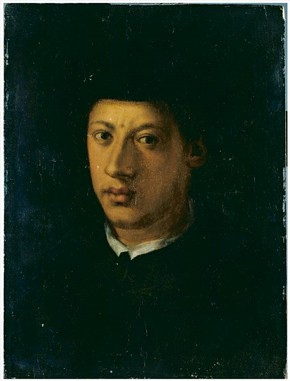Who Was the 1st Black Duke?
The Root
2013-05-13
Henry Louis Gates Jr., Alphonse Fletcher University Professor of History
Harvard University

Porträt des Alessandro de Medici by Pontormo, 1534-1535
100 Amazing Facts About the Negro: Meet the scion of a legendary Italian dynasty.
Editor’s note: For those who are wondering about the retro title of this black-history series, please take a moment to learn about historian Joel A. Rogers, author of the 1934 book 100 Amazing Facts About the Negro With Complete Proof, to whom these “amazing facts” are an homage.
I discovered the answer to the question above while visiting the Walker Art Museum’s exhibition “Revealing the African Presence in Renaissance Europe,” now at Princeton University. I was astonished when I encountered Bronzino’s “Portrait of Duke Alessandro de’ Medici,” a mulatto by the sight of him who, the exhibit claimed, also happened to be a member of one of the most powerful families in history and the first Duke of Florence almost 500 years ago!
Fascinated, I hurried home to see if Joel A. Rogers had included him in his various compilations of famous black people, many of whom were mixed race, liked this man appeared to be. Sure enough, Rogers listed him both in his 100 Amazing Facts and in Volume II of his The World’s Great Men of Color. His conclusion startled me: “That Alessandro was a tyrant there is no doubt whatever,” a remarkably frank assessment from Rogers, who had a tendency to romanticize the achievements of just about every person of even the proverbial “one drop” whom he discovered hidden in the shadows of world history. I wanted to know more about this man. Here are the highlights of what I learned.
A Pivotal Potentate
Like the first black president of Mexico, Vicente Guerrero, and our first black president, Barack Obama, Alessandro de’ Medici (1511-1537)—the first black head of state in the history of the modern Western world—was a mulatto. He was the son of an African slave and one of two Medici males, either a duke or a future pope. With the latter’s blessing, Alessandro served as duke himself—of Florence—from the age of 19 to his assassination at age 26 at the hands of his cousin. The reason the cousin gave: Alessandro was a tyrant out of step with his times, a military ruler in a republican age…
Read the entire article here.


